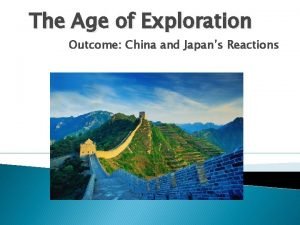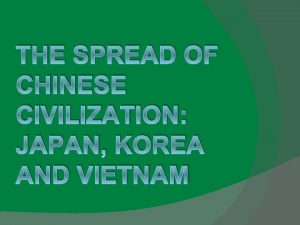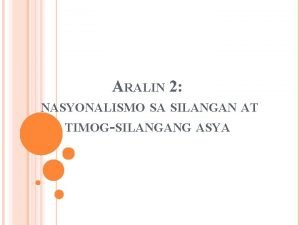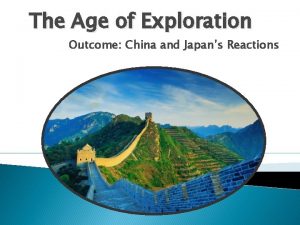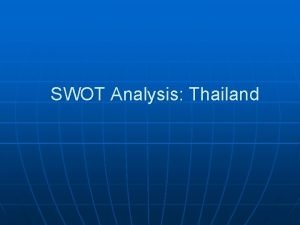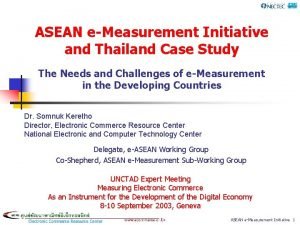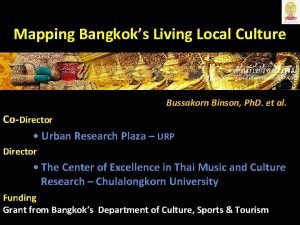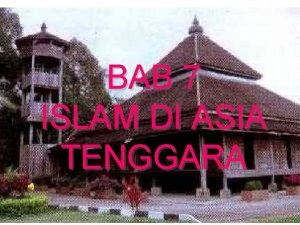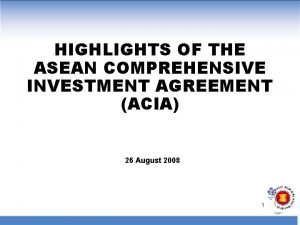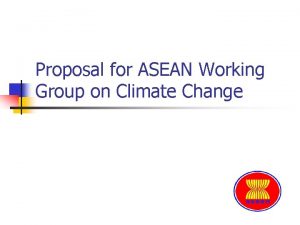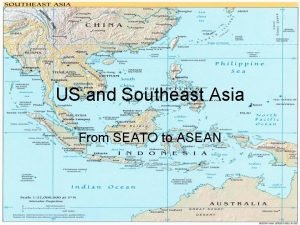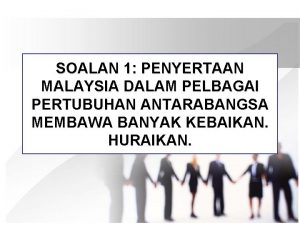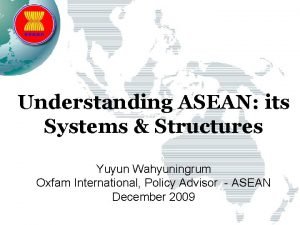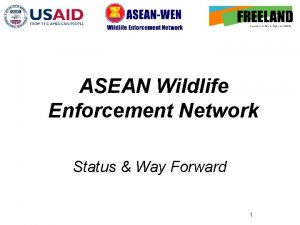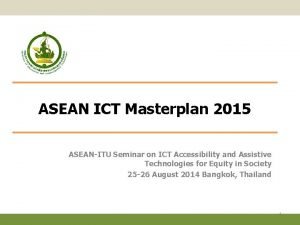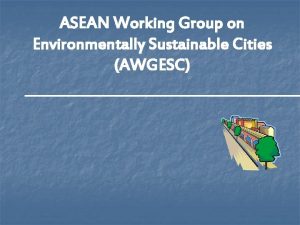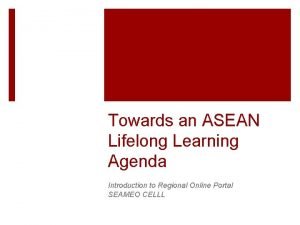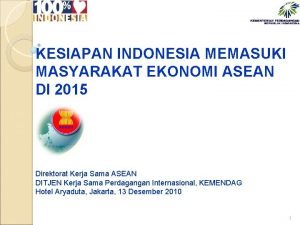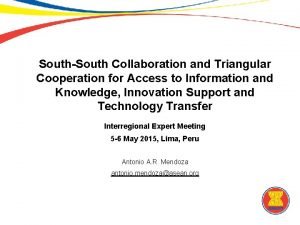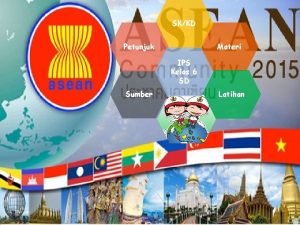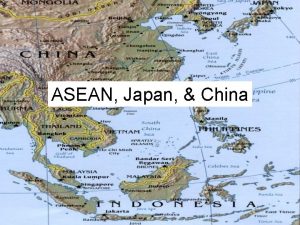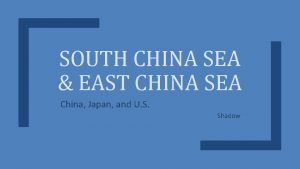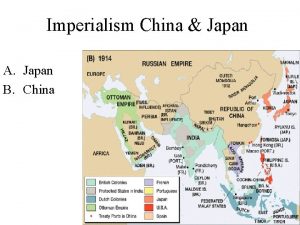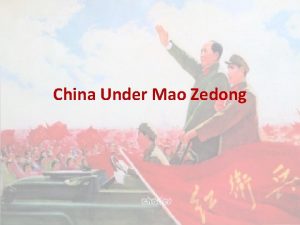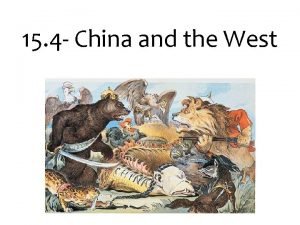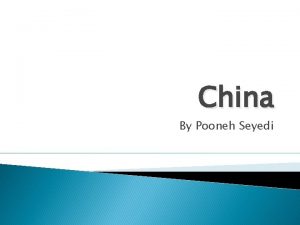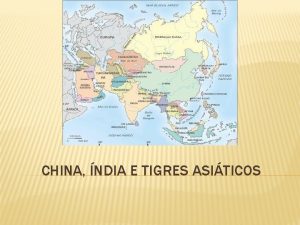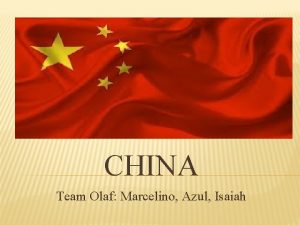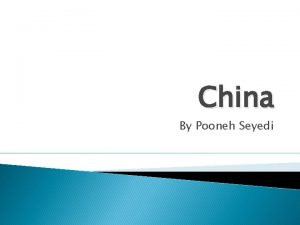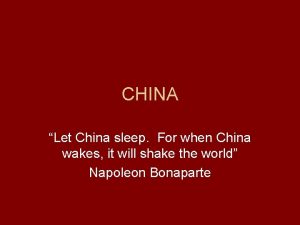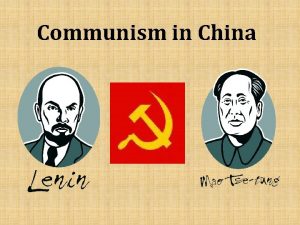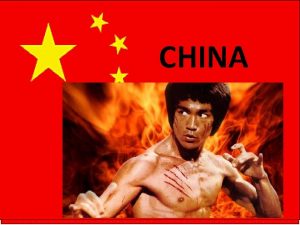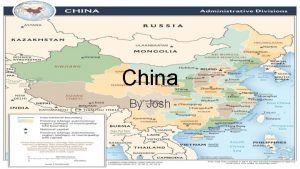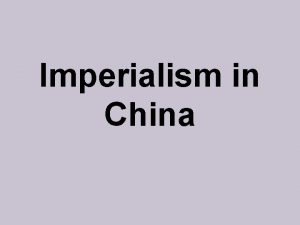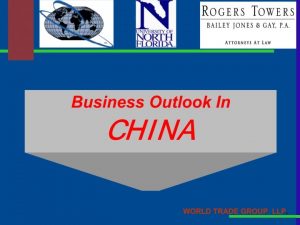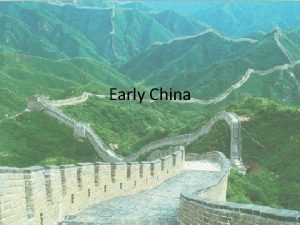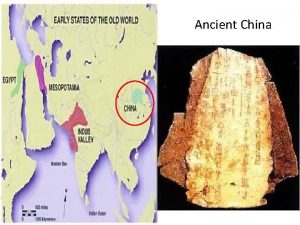ASEAN Japan China Outline z ASEAN Japan y




























- Slides: 28

ASEAN, Japan, & China

Outline z. ASEAN & Japan y. Legacy of World War II y. Historical development of 3 periods y. Economic versus political/security spheres z. Emergence of China z. ASEAN+3

Historical legacy z. Japan’s aggression in Southeast Asia during World War II

Japan’s Appeal in WWII z. Japan’s appeal to Southeast Asia during World War II y. Economic benefits x. Japanese model for economic development since the Meiji Restoration of 1868 x``Greater East Asia Co-Prosperity Sphere” y. Anti-colonialist x``Asia for the Asians” xnationalist movements

``Co-Prosperity Sphere” z``Greater East Asia Co-Prosperity Sphere” z. Japan’s economic foreign policy During World War II z. Absorption of the economies of all occupied countries z. Extraction of resources to fuel the war against the Allies

Consequence of WWII z. How did Southeast Asia change? y. Decline of x. Western colonial power xthe myth of European superiority y. Rise in x. Southeast Asian independence movements x. Japanese interests and influence in Southeast Asia x. US interests and influence in Southeast Asia y. Integration into global economy & community

Japan Returns (1950 s) z. US strategy concerning Japan y``dynamo of wider regional recovery in Free Asia” ycontain Communism z. Closure of China market in ‘ 50 s & ‘ 60 s y. Japan’s economic dependence on US ymaterials & markets of Southeast Asia

Japan & Southeast Asia: 1 z. Japan’s economic diplomacy in ASEAN ybilateral trade promotion & economic linkage x>1/4 of ASEAN’s total trade was with Japan x. Japan invest more in ASEAN than US y. Asian Development Bank (1966 - ) yavoid taking any political initiative z 1974: anti-Japanese demonstrations during Japanese Prime Minister’s visit

ASEAN Attitudes z. Singapore Prime Minister Lee Kuan Yew said in 1969: y``My generation and that of my elders cannot forget [WWII] as long as we live” y``The policy of our government is not to allow the unhappy experiences of the past to inhibit us from a policy which can enhance our growth rates by Japanese participation”

Japan & Southeast Asia: 2 z. Anti-Japanese demonstrations of 1974 z. Fall of South Vietnam in 1975 z. Japan began taking an active interest in the political affairs of Southeast Asia yfrom bilateral relations to focus on ASEAN

Japan’s Reaction to 1978 z 1978: Vietnam invaded Cambodia ythreatened Japan’s economic interests y. Japan maintained a dialogue with Vietnam z. Japan’s reaction yaligned with US-ASEAN-PRC camp yhalted economic assistance to Vietnam ycalled for Vietnam to withdrew all troops from Cambodia

ASEAN’s Attitude to Japan z. Distrust remained but reduced z. Fears of Japan’s imperialist tendencies remained but reduced

ASEAN-Japan Econ. Links z. Economic links strengthened y. ASEAN countries’ development programs needed Japan’s support and investment y. Japan as an economic model & partner x. Malaysia’s ``Look East”, Laos and Singapore’s ``Learn from Japan” y. Complementary economies of Southeast Asia and Japan

Complementary Economies

Japan & Southeast Asia: 3 z. Since the end of the Cold War z. Japan redefined its role in international affairs after the Cold War z. Japan-ASEAN relationship strengthened ygreater interactions x. ASEAN as a region and as an institution y. Japan’s deeper involvement in regional affairs xmore politically engaged

Japan’s Political Role z 1990: Tokyo Conference on Cambodia z 1992: Japan sent 1, 800 troops as UN peacekeeping forces to Cambodia zsince 1994: active participant in regional multilateral arrangements such as ASEAN Regional Forum (ARF) zsince 1997: political/security dialogues with Singapore, Thailand, and Indonesia

ASEAN Receptiveness z. Malaysia Prime Minister Mahathir said in 1991: y``As we approach the year 2000, it is our hope that Japan will initiate changes in its policies that will effectively bring about an enhanced political, socio-cultural role in not only the Southeast Asia region but also in the global context”

Diminishing Role of History z. After the Cold War y. Increasing economic interdependence between Japan & Southeast Asia y. Fear of Japanese remilitarization reduced y. Generation change y``China threat”

Rise of China z. China’s ``Reform & Opening-up” policy z. Increasing presence in Southeast Asia y. Expanding trade y. Political relations and influence xvisits by leaders xsummit meetings xsubstantive agreements on issues ranging from trade to military cooperation

Growing Regionalism (A+3) z 1995: Asia-Europe Meeting in Bangkok y. ASEAN asked Japan, China, & South Korea to join as Asian representatives y. Japan feared alienating US & China z. US & Australian reservations about a regional grouping in Pacific Asia yimpact on the success of APEC ypossible division of global economy


ASEAN+3 Summit z. China & Japan compete for regional leadership position z. ASEAN+3 summit has taken place at each of the ASEAN summit since 1997 zregular ASEAN+3 meetings of finance & economic ministers

Asian Financial Crisis (‘ 97) z. Japan’s role in Southeast Asia ycontribution of funds and initiatives xemergency financial assistance xaid plan for regional human resource development xcooperation in information technology sector yinaction on banking reforms yineffective economic stimulus measures y. ASEAN urged faster action to help recovery

Asian Financial Crisis (‘ 97) z. China’s role yrefrained from devaluing yuan ycontribution of funds and initiatives yentry into World Trade Organization (2001) y. ASEAN-PRC Free Trade Area (2001) ythreatens Japan’s economic leadership in Southeast Asia

2001 ASEAN Summit z. China and ASEAN formally announced intention to start talks on establishing a free-trade zone within 10 years z. South Korea proposed an ASEAN+3 freetrade area z. Possibility of establishing an ASEAN+3 secretariat

2002 ASEAN Summit z. China yforgave the debts of Vietnam, Laos, Cambodia, and Myanmar yduty-free privileges for exports of the least developed members of ASEAN ysigned declaration on South China Sea ysigned framework agreement for ASEAN-PRC FTA beginning in 2010

Japan z. Japan signed its first-ever free-trade agreement (with Singapore) in 2002

Conclusions z. ASEAN+3 have considerable potential y. APEC may be too broad y. ASEAN may be too narrow z. Contested regional leadership position between Japan and China y. Japan most advanced economy y. China’s momentum
 What was the outcome of china's age of exploration?
What was the outcome of china's age of exploration? Spread of china's literature to heian japan and korea
Spread of china's literature to heian japan and korea Tawag sa mga sundalong komunista sa china
Tawag sa mga sundalong komunista sa china The age of exploration outcome china and japan's reactions
The age of exploration outcome china and japan's reactions Sentence outline
Sentence outline Asean swot analysis
Asean swot analysis E-asean
E-asean One vision one identity one community
One vision one identity one community Asean paises
Asean paises Asean culture
Asean culture Talent accelerator program
Talent accelerator program Asean women's entrepreneurship network
Asean women's entrepreneurship network Negara pemrakarsa gerakan non blok
Negara pemrakarsa gerakan non blok Asia tenggara
Asia tenggara Acia
Acia Awgcc
Awgcc Seato
Seato 5 pertubuhan antarabangsa
5 pertubuhan antarabangsa Bilateral adalah
Bilateral adalah Asean one vision one identity one community
Asean one vision one identity one community Yuyun wahyuningrum
Yuyun wahyuningrum Pt barra asean shipping
Pt barra asean shipping Asean wildlife enforcement network
Asean wildlife enforcement network Asean ict masterplan 2015
Asean ict masterplan 2015 Asean working group on environmentally sustainable cities
Asean working group on environmentally sustainable cities Asean centre for biodiversity
Asean centre for biodiversity Asean secretariat
Asean secretariat Asean three pillars
Asean three pillars Negara yang ditunjukkan oleh anak panah beribukota di
Negara yang ditunjukkan oleh anak panah beribukota di
